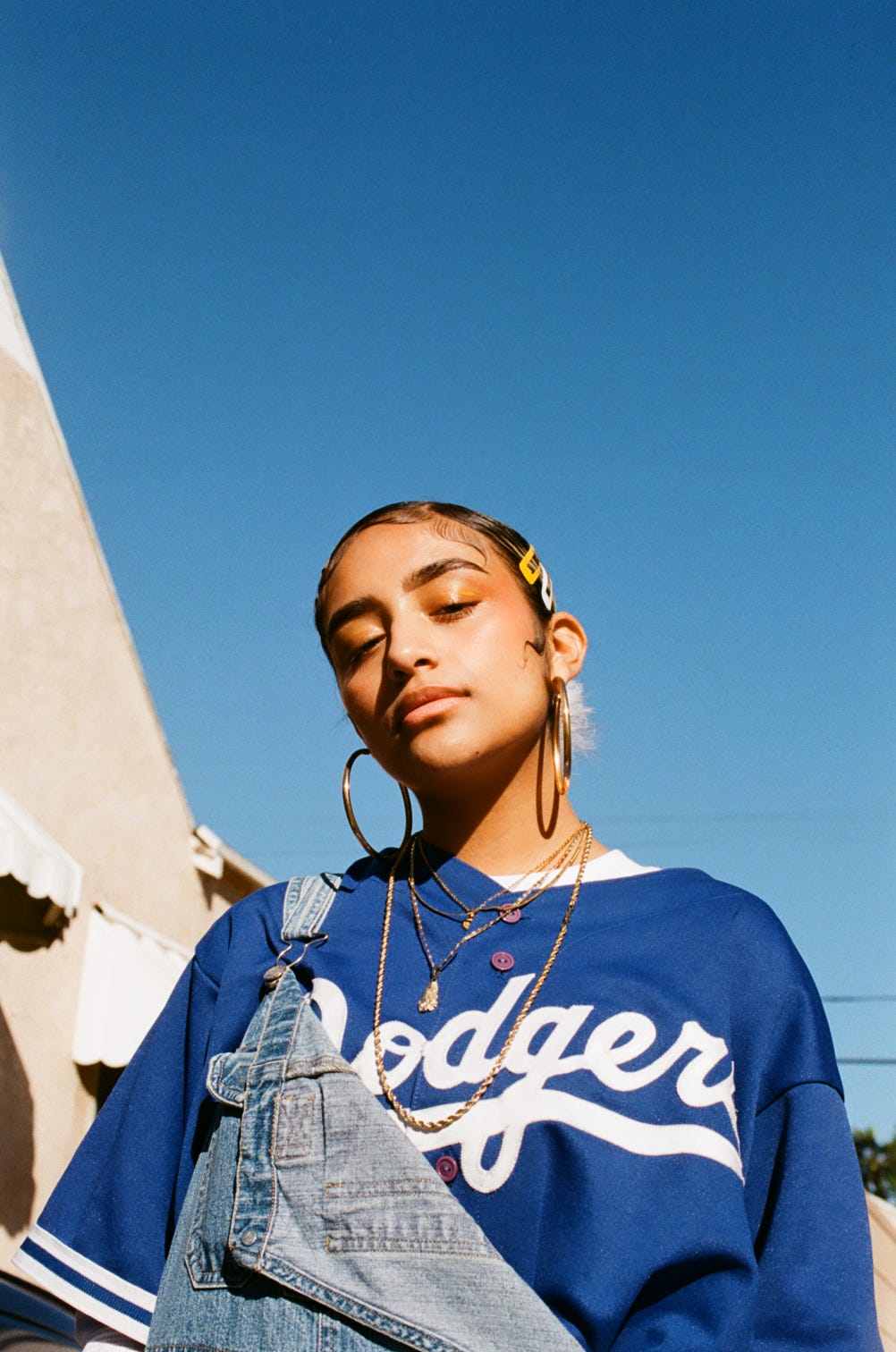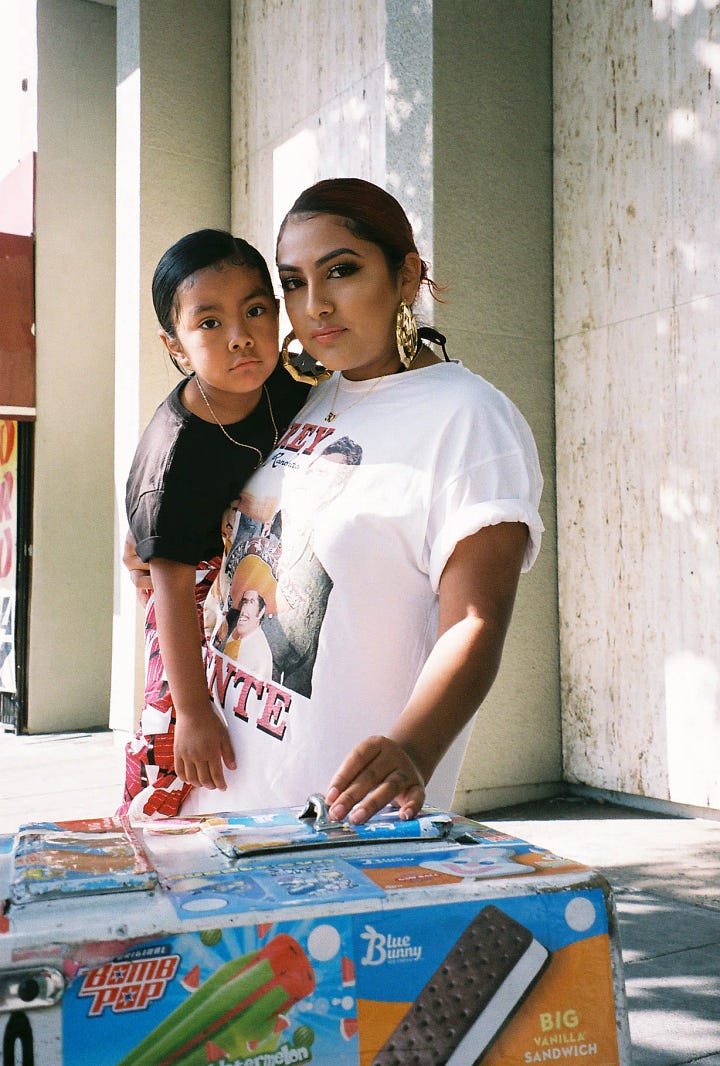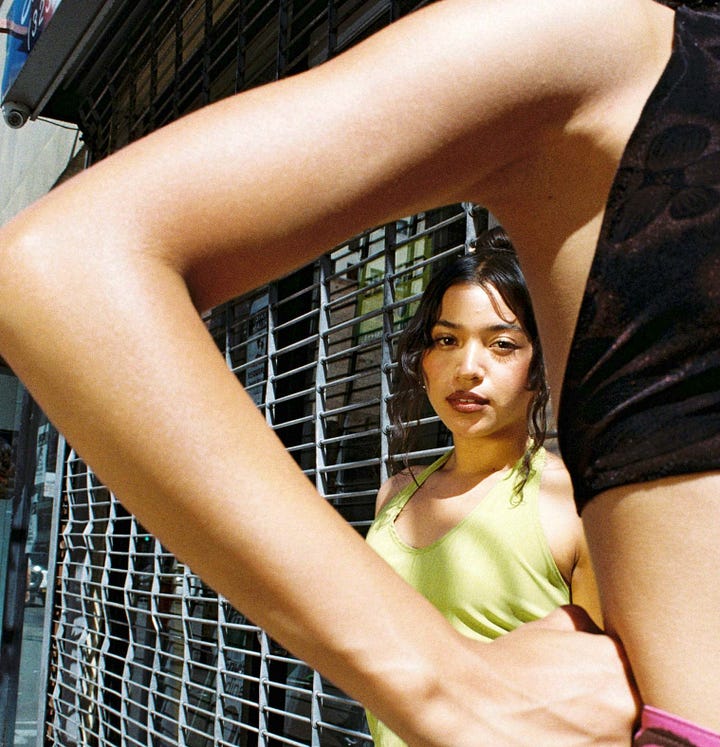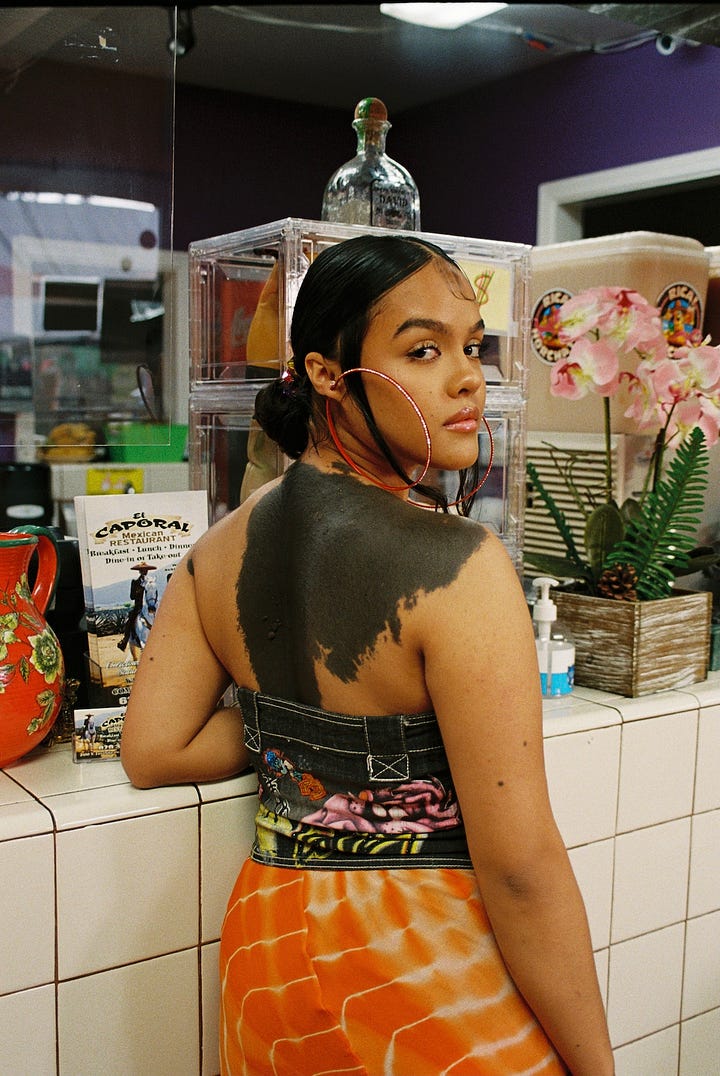Los Angeles: Meditations in an Emergency
Earlier this month, Los Angeles became ground zero in the Trump administration's extreme campaign to deport undocumented immigrants. A meditation in four parts.

Welcome to Homesick, a newsletter about place, identity, and the complicated nature of home. Each week, we investigate these themes through the lenses of art, culture, and politics, with the hope of better understanding our place in the world. Did someone forward you this newsletter? If so, you can subscribe, read our archives, or visit HMSCK.com to learn more.
Meditations in an Emergency is an occasional series spotlighting the people and places caught in the eye of our current political storm—reflecting the country at a critical juncture in history.
LOS ANGELES IS ON MY MIND. It has been for weeks, since the initial wave of arrests by Immigration and Customs Enforcement officers were carried out on June 6. Over 40 immigrants were arrested in those raids. Day laborers at a Home Depot in Westlake were targeted, as were employees at Ambiance Apparel in the Fashion District. What keeps playing in my head are the videos. In the aerial news footage of the Ambiance raid, white passenger vans are shown pulling into the back parking lot, flanked by dozens of militarized ICE, FBI, and HSI officers wearing masks to protect their identities. Undocumented workers are cuffed and taken into custody. Protesters and family members plead with law enforcement. Some try opening van doors to free their friends or family members. Others use their bodies to block the vehicles from leaving the lot. But nothing works, and moments later all those people are just gone.
I’ve wanted to write about Los Angeles for weeks, but had no idea where to start. Do I write about how unprecedented it is for a president to deploy the National Guard against protesters? Do I write about how extraordinary it is for a president to send Marines into an American city? Do I write about how damaging it is for a president to perpetually weaponize the rhetoric of fear? Do I write about how mentally abusive it is for a president to gaslight millions of people every day? How do you counter a false narrative characterizing the city as a place consumed by violence and turmoil when people on the ground proved otherwise through videos and photographs of peaceful demonstrations? How do you correct the record to point out that the most inflammatory acts—an autonomous vehicle set on fire by a few bad actors—were amplified the loudest while life generally went on as usual across much of the city?
It is exhausting to be subjected to the nonstop fuckery of a geriatric grifter like Trump, a man whose narcissism knows no bounds and whose insecurities are endlessly overcompensated for with the most unconvincing strongman act in American political history. To witness Los Angeleno people being kidnapped, families being separated, and entire lives upended while half the nation applauds, reminds us that so many Americans are not capable of empathy or looking at issues like immigration reform with patience or grace. A quick look at social media feeds or comments on news articles about the ICE raids, reveals so many people celebrating our march toward authoritarianism. Why is half the country so willing to accept the broken ideals and warped authority of a man without conscience?
I FIRST VISITED LOS ANGELES in the summer of 2001, when I was 24 years old. Michelle and I were on a monthlong cross-country roadtrip, and the route from San Francisco to Los Angeles on the Pacific Coast Highway was an anticipated highlight. What I remember most about arriving in Los Angeles was parking at an overlook in the Hollywood Hills, where I could see the Hollywood sign behind me and the sprawling city below. To say it was breathtaking sounds trite—it was otherworldly. At that point in my life, I had never been further west than Ohio. As far as I was concerned, being in Los Angeles was no different than traveling to Europe or Asia or Africa—it was all so much bigger than the world I knew as a Rust Belt kid struggling to navigate early adulthood.
Going to California was a lifelong interest of mine, inspired in part by the versions of the state I had watched on television, seen in films, and read about in magazines my whole life. I recalled the opening scene from Pulp Fiction, where Pumpkin and Honey Bunny rob a 1960s-style coffee shop, and my idea of a Los Angeles restaurant was cemented. I remembered John Belushi’s death due to an overdose of cocaine and heroin at the Chateau Marmont, and my image of Hollywood tragedy was crystallized. I replayed music videos in my head: Axl Rose stepping off a bus on the Sunset Strip in the video for “Welcome to the Jungle,” Johnny Depp in a tattoo parlor in Tom Petty’s “Into the Great Wide Open,” or Alicia Silverstone in a trio of memorable Aerosmith videos set in Los Angeles.1 These were the pop culture images of the city seared into memory as a teenager in the nineties.
As we drove down Sunset Boulevard in our silver Volkswagen, the Church of Scientology building caught my attention. It was topped with two-story-tall letters that spelled out S-C-I-E-N-T-O-L-O-G-Y at a comical scale. Later we passed Grauman's Chinese Theatre on Hollywood Boulevard, where Shrek was showing—a reality check that made the famous institution far less interesting. That first visit was a tourist’s crash course in getting to see the city, not necessarily to know it.
Fast forward half a decade and things changed. Between 2005 and 2009, during my stint as an automotive journalist, I made regular trips to Los Angeles to attend the annual auto show at the Staples Center and test drive cars to write reviews for the magazine where I worked. Those trips afforded me opportunities to explore the city. I frequented Family, a now-shuttered bookshop on Fairfax with an incredible selection of zines, comics, alt-lit, small press selections, and rare books. The Supreme shop was still across the street at the time, before it relocated to the Sunset Strip, and I would stop in to shop and watch skaters carve the massive wooden bowl that sat like a nest in the center of the store. A friend from high school was pursuing his MFA at the time, and I would visit his studio at UCLA, and later we would catch up while walking around Venice. Another friend, a writer and publisher I met early in my career, lived in Echo Park, and we met up each time I was in town, usually bullshitting over ramen and beer at a noodle bar.
While at times I felt intimidated by the sprawling size of Los Angeles, I loved it for its wildly diverse geography and shifting personality from neighborhood to neighborhood. I would steal away from the auto show during a lull in the action to go sit on the beach in Santa Monica, dip my feet in the Pacific Ocean for an hour before heading back to cover a late afternoon press conference. I remember sitting in an empty bar in the Garment District one afternoon talking to the bartender about, of all things, blogging and what it meant for traditional publishing. It turns out I’ve always been a nerd.
FOR ALL THE POLITICAL-INDUCED ANXIETY AS OF LATE, smart and thoughtful people are on the ground, writing about and documenting what’s happening. The ICE raids and citizen protests in Los Angeles are perfect examples. “Inspired by the courage of the most vulnerable, tens of thousands in LA and across the country have undertaken bold action,” Roberto Lovato wrote last week in The Nation, including “health workers putting their bodies on the line to defend immigrants; teachers developing “tools of resistance” kits for students, families and communities; unions mobilizing to protect workers; students refusing to bow down before heavily armed marines and militarized police; community members driving ICE out of homes, hotels, and other workplaces; and thousands of everyday people defending their friends and neighbors against ICE.”
Last week, in an essay by Rhys Langston for the Los Angeles Review of Books, the Los Angeles–born musician, writer, visual artist, and educator recalled his experience of a week occupied by ICE. “As this relentless campaign continues, we must now consider the question: Why have we been given an oppositional strategy that aims us ultimately toward awareness as a political tool of resistance?” Langston wrote. “For once that action becomes a state of being (“being aware”), the accoutrements of that stasis show themselves as props of passivity and consumption: bingeing MSNBC or CNN for updates, sharing infographics, buying sloganized merchandise. In the end, fascism loves awareness, for awareness is a prerequisite of fear, spectacle, and ultimately an attendant brutality.”
TO UNDERSTAND THE CHARACTER OF A PLACE, I often turn to photography. Not necessarily because images always illuminate a place, but because photographers, like writers, are diligent observers. With the population of Los Angeles approximately 47% Latino, I was reminded of the work of photographer Thalía Gochez, whose pictures I first encountered on the cover of Aperture’s “Latinx” issue.




“I’ve always been interested in highlighting story and identity,” Gochez said in a 2022 interview. “I create for my community and if they feel seen and find sanctuary in my work, then I’ve done my job—I don’t need mainstream America’s approval to know that the folks I capture and their stories are beautiful.”
In her practice, Gochez, a Los Angeles native, prioritizes the experience of her subject—often viewing her portraits as collaborations with the sitter. The photo book that she is working on, tentatively titled De donde eres?, which in English translates to “Where are you from?”, is focused on immigrant stories. Given the federalized xenophobia on display in Los Angeles this month, to end with Gochez’s intimate portraits celebrating Latinx identity seems fitting.
When I say memorable, I mean on two fronts. First, for Alicia Silverstone, who I had a crush on after seeing her in The Crush (1993). Second, for Aerosmith, whose nineties music catalog I deeply disliked.




